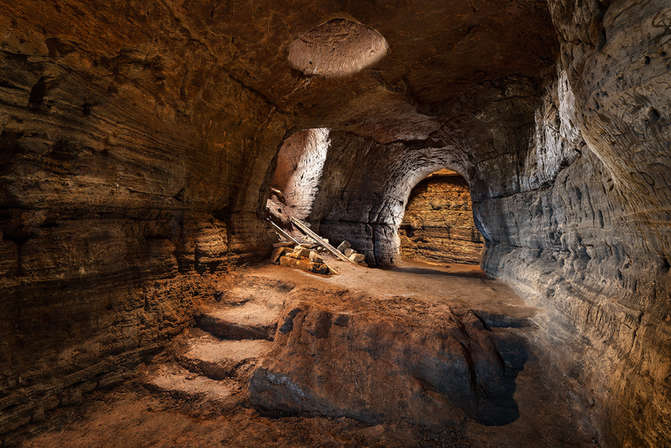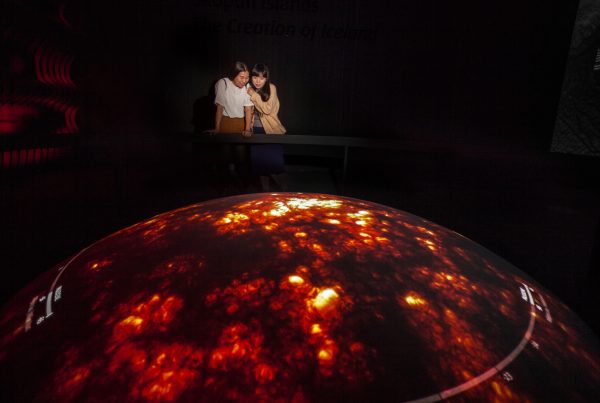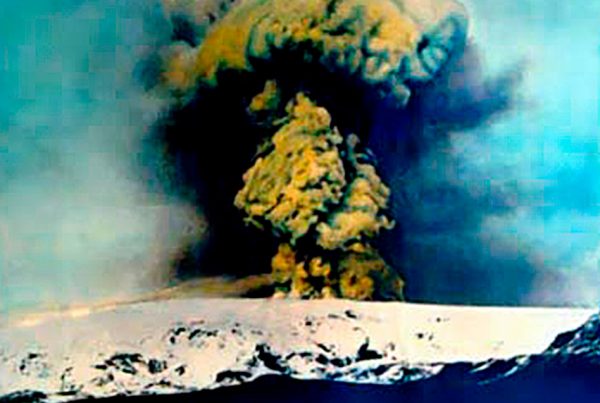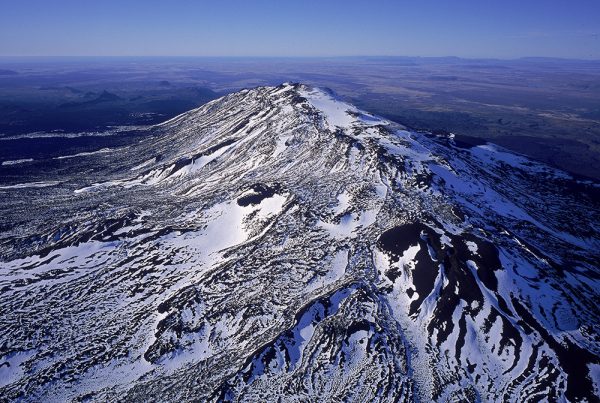The Italian journalist Mauro Garofalo recently visited the LAVA Centre during his Icelandic adventures. He penned a captivating article that explores the geology of Iceland, the impact of global warming, and the attractions in southern Iceland. We have translated the essence of his article, but you can find the original piece on Il Sole 24 Ore.

Caves of Hella Picture: cavesofhella.is
Mauro’s journey begins with a visit to the Caves of Hella, believed to date back to Celtic times, predating even the Viking settlement era. These underground caverns, located just a few feet below the surface, served as shelters, cellars, and homes. The walls bear holes where inhabitants once hung their belongings, and the stone floors, now sprouting mushrooms, were once used to cook food over central fires. The tools used for excavation remain a mystery, adding to the allure of these ancient caves. Among the artefacts, the scent of wine from matured local whiskies, and a Celtic inscription of a girl’s name, offer a staggering glimpse into primitive life, where protection was sought from humans rather than fierce animals.
One cave features a cross carved into the rock, dated to 480 B.C., discovered in 1913. This sacred symbol, as philosopher Heidegger would describe, brings a profound sense of sacrum to these dimly lit caverns.
Following his exploration of the caves, Mauro visited the LAVA Centre, where he was warmly welcomed by Bardur, who conversed with him in Italian, having studied in Assisi. Bardur shared recent seismic activity news, mentioning a 5.1 magnitude earthquake to the north. He discussed how global warming has led to the retreat of glaciers, now reduced to nearly barren landscapes. And how puffin breeding grounds have moved more to the north and new species have appeared in the south. This phenomenon of disappearing glaciers exacerbates volcanic activity, leading to increased gas emissions and a vicious cycle of rising CO2 levels.
At the LAVA Centre, Mauro also met Halla Margrét, a geologist who explained the complexity of volcanic eruptions. They discussed how magma’s movement and explosions are measured by volume and tephra, illustrating the immense power beneath Iceland’s surface. Reykjavik’s unique position on the American plate, near the European plate, explains why Iceland hosts 30 active volcanoes. Mauro emphasised that the LAVA Centre’s documentary, showcasing the scope and power of these natural forces, should be projected in schools worldwide to highlight humanity’s fragility and the planet’s formidable forces.
Mauro’s Icelandic journey also included a visit to Gamla fjosid for a hearty spiced meat soup, followed by a trip to Skogafoss, a magnificent waterfall. He noted the cooler evening temperatures and the refreshing spray of the waterfall, providing a natural respite.
Next, Mauro ventured to Reynisfjara’s “black beach,” a place of incredible intensity. The wind, the grass fields, and the kittiwakes created a mesmerising scene. The treacherous waves and the volcanic rock formations rising from the sea evoke a sense of ancient, wild beauty. Despite the warnings and restricted access due to dangerous currents, the beach remains a testament to Iceland’s raw, untamed nature.
For the full experience and intricate details of Mauro Garofalo’s adventure, visit his original article on Il Sole 24 Ore.


